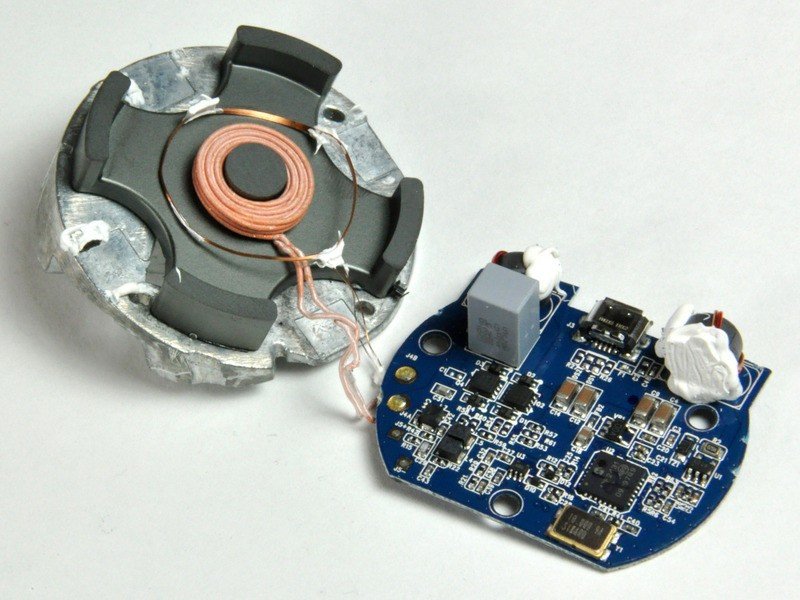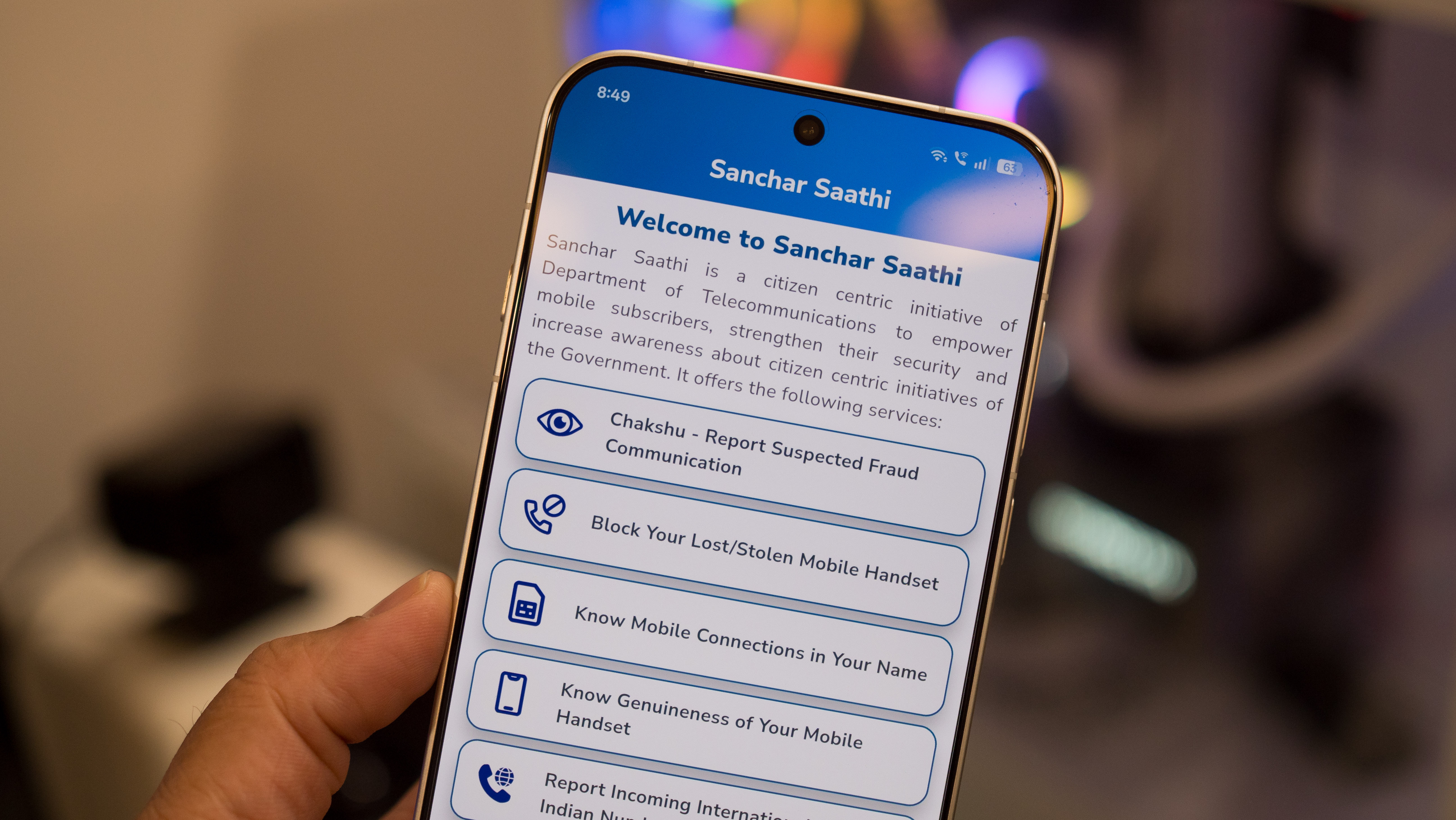I hate the Nexus 4 Wireless Charger

About a month ago I picked up an LG Nexus 4. I've known Android for some time, but until buying the Nexus 4 I'd yet to actually own an Android handset. While Android has surprised me in some areas and frustrated me in others, that's not what I'm here to talk about today. Nope, I'm here to talk about the Nexus 4 Wireless Charger and how much I hate it.
The photo above was taken approximately five minutes after I'd carefully and deliberately set my Nexus 4 onto the Wireless Charger to, well, wirelessly charge. And it did. The move to get from being positioned centered on the charger to resting on its side with the charger as a glorified kickstand was smooth and quiet. It went entirely unnoticed as I sat not two feet away, working on my computer. Not until I looked over to see if it had stayed in position did I discover that it in fact had not.
Normally my Nexus 4 just slips down half an inch or so until it's no longer optimally positioned on the charger and no longer taking a charge through the ether. Sometimes it also lists slightly to the right, but only by ten degrees or so. After I took that photo, rolled my eyes, and posted it to Twitter, I carried on with my work, curious to see where the Nexus 4 would slide to next. Five minutes later, my typing was interrupted by a soft thunk - gravity had finally conspired to pull the phone entirely off the charger and it was now resting flat on its back on my desk.
Thankfully, my charger is positioned a foot from the back of my desk, so it'd still take a while for my nub-less Nexus 4 to slip and slide its way onto the floor.
While this example is particularly extreme, it all-too-fully illustrates how much I despise the Nexus 4 Wireless Charger. You see, I come from the land of webOS - I've been writing on webOS Nation for the better part of four years. Though that whole time I've been using the excellent Touchstone charger developed by Palm. Like the Qi wireless standard, Touchstone works off of the principles of inductive power transfer, charging your devices by running a current through a tight coil of wire in the charger that induces a charge in a corresponding coil in the smartphone's back.
Inductive power transfer is indeed wireless charging, whether you're using a Qi standard charger or the proprietary standard that is Touchstone (for the record, they're not compatible standards - you can't charge a Touchstone device on a Qi charger or a Qi device on a Touchstone charger). But the nature of inductive charging requires that the coils be in close proximity - my Nexus 4 gives a notification that it's take a charge at hair under a quarter of an inch off the charger - and alignment.
Touchstone may have been proprietary, but Palm's designers and engineers took the very important step of making sure their chargers would be foolproof. They accomplished it by using something you probably have affixed to the refrigerator in your kitchen right now: magnets. The little Touchstone charger has a large magnetic block stuffed inside it, machined in such a manner as to have four prongs sticking up around the induction coil. Those four prongs matched up to four small magnets in the back of webOS smartphones like the Pre, both aligning the phone's coil with the charger's coil and holding them in place.
Get the latest news from Android Central, your trusted companion in the world of Android

This magnetic alignment and attraction scheme worked for three years from the original Palm Pre to the larger and less-curved HP Pre3 and from the flat-backed Palm Pixi to the diminutive HP Veer. When it came time to build a wireless charger for the TouchPad tablet, HP kept the same proprietary standard, but dispensed with the magnets and built an easel-style stand that still positioned the tablet where it was needed to charge.
My problems with the Nexus 4 Wireless Charger have to be viewed through this lens. I've come from four years of solid and functional wireless charging bliss. Not only do I have a Touchstone on my desk in my office, there's also one on my nightstand and I've even mounted one on my car dashboard. Compared to Touchstone, even though it's a proprietary standard with no compatible hardware released in the past year, the Wireless Charger is an experience of disappointment and irritation.
Let's start with the first week's experience. I pulled my shiny new Wireless Charger from its box, snaked a Micro USB cable through my desk to the power strip, and set the charger on my desk, sitting to the left of my iPhone-charging Elevation Dock and stalwart phone-size Touchstone. I then set the Nexus 4 on it and realized it wasn't taking a charge because it wasn't positioned properly, so naturally I tried to reposition it. What happened? The grippy ring on the top stuck to the back of the phone and lifted the charger up off the desk. It fell off with a slight jiggle, and I soon learned that I was going to have to use two hands to separate the Nexus 4 from its charger.
That's problem number one with the Wireless Charger: it's just not heavy enough. What I love about the Elevation Dock for my iPhone is that it's machined out of a solid hunk of aluminum. It's hefty and by-and-large it stays in place as I pull my iPhone off of it. The Touchstone is heavy too - that big magnetic block isn't lightweight, but that magnet is also quite adept at keeping the charger attached to the phone.
Palm got around this by slapping a ring of "gecko-inspired" micro-suction foam on the bottom of the Touchstone and calling it a day. This grippy substance isn't adhesive and yet lets the Touchstone stick to just about any smooth surface, from my desk to my dashboard to a vertical pane of glass. In fact, the micro-suction ring on the bottom of the Touchstone isn't all that dissimilar to the grippy ring on the top of the Wireless Charger. It's just more substantial and on the bottom.
The Wireless Charger, however, is light. It's almost absurdly light for how big it is. X-ray scans of the charger have revealed that it's almost entirely empty, and that space could have been filled with metal weights to add some heft to the charger. If it were heavier, it might just stay in place when I grab the phone off of it. The iPhone Elevation Dock has an iPhone dock connector in it; it's a 30-pin connection that's not designed to be easily disengaged. But yet the weight of the all-metal Elevation Dock has proven to be enough to keep it down while the phone goes up.
Problem two is an extension of problem one. The reason the Wireless Charger can lift up off my desk with the Nexus 4 is because of that sticky ring. But that sticky ring serves a distinct and important purpose: keeping the Nexus 4 in place over the induction coil so that charge can be imparted. Where Touchstone uses magnets, the Nexus 4 Wireless Charger uses a grippy ring of micro-suction foam. Each has its benefits and pitfalls.
While a Touchstone-equipped Pre can potentially erase hotel keycards and trigger sleep switches on laptops, it will always stick where it needs to in order to charge. It becomes habit after a while to position the Nexus 4 in the right spot to receive a charge, so the grippy ring serves its purpose in keeping the phone there. Except when it doesn't.
The problem with having a grippy surface facing up is that you have a grippy surface facing up. Dust, hair, lint, and other fine particulate matter in the air that eventually deposits itself on your desk and monitor and knick-knacks also finds a spot on the Wireless Charger. And that grippy ring that you depend on to keep the Nexus 4 in place while it charges isn't so grippy anymore and your phone just slides right off after a few minutes. And it's not something you can just wipe clean with your hand or with a quick blow of air, no, it's micro-suction foam. Don't even think about wiping it on the leg of your pants - that's a recipe for early-onset dementia.
Then how do you clean the Wireless Charger's grippy ring? There are two options: either you can use a damp cloth (preferably lint-free) to wipe it - and we all know that electronics and moisture aren't a combination you should willingly bring together on a regular basis - or you can pull out something more sticky like packing tape to lift away the accumulated detritus. Yep, you need to use tape to keep the Wireless Charger operating in optimal condition. But while you're at it, you can use that tape to stick the charger to your desk so it doesn't lift up when you try to lift your phone off the newly-cleaned grippy ring.
But that poses a different and better question: why on Earth do I own a charger that requires regular maintenance to operate effectively? Most Qi chargers come in the form of pads and other horizontal implementations (and pillows?) where you simply set the phone down and it charges. You know, as long as you put it over the charge coil and it doesn't slip away. They don't have a grippy ring to hold the phone in place because they don't need one.
The Nexus 4 Wireless Charger is tilted, which while a great design feature to make it more useful as an always-on heads-up display, also means there needs to be some method to keep the Nexus 4 and whatever other phones come after it in place so they can charge. Hence the grippy ring of micro-suction foam.
Palm had the benefit of making their own chargers for their own phones. They could add magnets into the Touchstone system without having to consult with a bevy of partners. But at the same time, Palm chargers only work with Palm devices (or those hacked to include Touchstone coils). The Qi standard is set, and while it's likely to evolve over the coming years to support higher power charging, greater distances, and perhaps even wider tolerances for positioning, alignment aids like the Touchstone's magnets aren't likely.
When my Nexus 4 Wireless Charger is perfectly clean, it seizes to my phone with maddening zeal. When my Nexus 4 Wireless Charger is even slightly dusty, it schluffs my phone off onto my desk like HP disposed of my beloved webOS (I might still be bitter).
Yet, when my Nexus 4 is perfectly positioned on a cleaned Wireless Charger and I'm not trying to pick it up, it's great. It reliably takes a charge, stays in place, and, well, it gives me the time (I've yet to find something really worth putting on my Nexus 4 for Daydream while charging, but there are some cool options out there). But every time I have to clean it or use my other hand to separate it from the phone, I'm reminded of my Touchstone, sitting two chargers to the right, and how three years ago Palm got right what LG and Google haven't today.

Derek Kessler is Special Projects Manager for Mobile Nations. He's been writing about tech since 2009, has far more phones than is considered humane, still carries a torch for Palm (the old one), and got a Tesla because it was the biggest gadget he could find. You can follow him on Twitter at @derekakessler.

